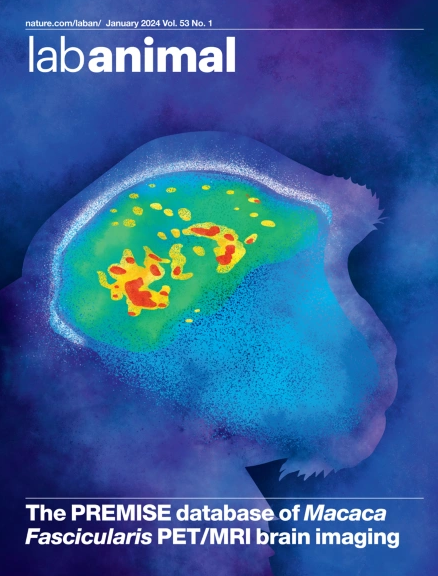实验动物遗传学报告 (LAG-R) 指南详解
IF 5.9
3区 农林科学
Q1 VETERINARY SCIENCES
引用次数: 0
摘要
由国际专家团队开发的实验动物基因报告(LAG-R)框架最近发表在《自然-通讯》(Nature Communications)上。LAG-R框架提出了一系列指南,以改进动物模型遗传信息的报告。Lab Animal采访了该报告的通讯作者莉迪亚-特布尔(Lydia Teboul)和纪尧姆-帕夫洛维奇(Guillaume Pavlovic),以进一步了解这些建议的动机、对研究人员的益处以及如何加快采用这些建议。本文章由计算机程序翻译,如有差异,请以英文原文为准。
A closer look at the Laboratory Animal Genetic Reporting (LAG-R) guidelines
The Laboratory Animal Genetic Reporting (LAG-R) framework, developed by a team of international experts, was recently published in Nature Communications. The LAG-R framework proposes a collection of guidelines to improve the reporting of genetic information for animal models. Lab Animal spoke with corresponding authors Lydia Teboul and Guillaume Pavlovic to know more about the motivation for these recommendations, the benefits for researchers and how to accelerate their adoption.
求助全文
通过发布文献求助,成功后即可免费获取论文全文。
去求助
来源期刊

Lab Animal
农林科学-兽医学
CiteScore
0.60
自引率
2.90%
发文量
181
审稿时长
>36 weeks
期刊介绍:
LabAnimal is a Nature Research journal dedicated to in vivo science and technology that improves our basic understanding and use of model organisms of human health and disease. In addition to basic research, methods and technologies, LabAnimal also covers important news, business and regulatory matters that impact the development and application of model organisms for preclinical research.
LabAnimal's focus is on innovative in vivo methods, research and technology covering a wide range of model organisms. Our broad scope ensures that the work we publish reaches the widest possible audience. LabAnimal provides a rigorous and fair peer review of manuscripts, high standards for copyediting and production, and efficient publication.
 求助内容:
求助内容: 应助结果提醒方式:
应助结果提醒方式:


